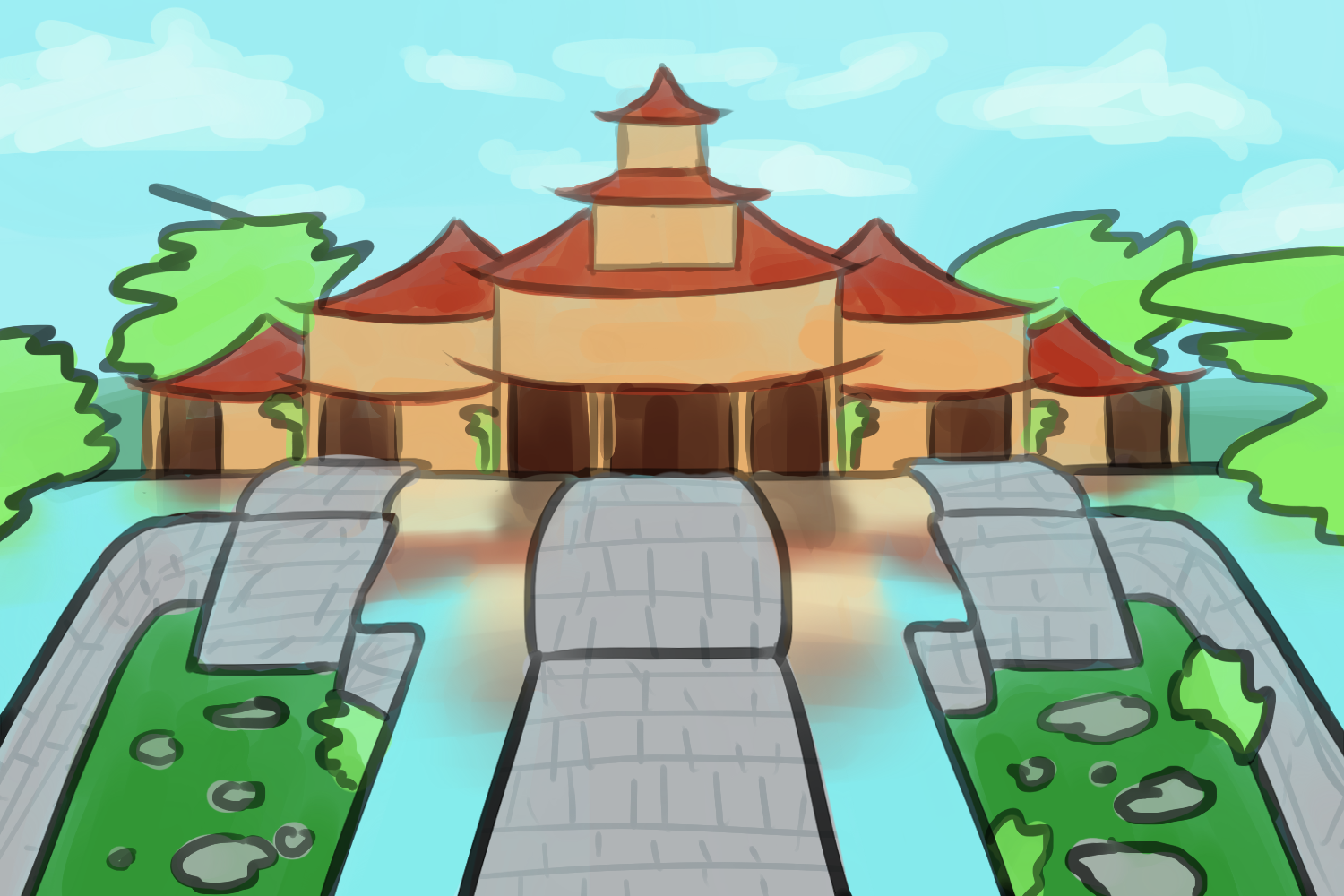Merlis Palace
Merlis Palace was the primary residence of the Divinitian royal family from its opening in 649 until 1000 during the War of Succession. For a time it was used by the Empresses of Modern Divinice, but is now primarily used as a place for holding functions, and is partially open to the public. Until the renovation of Dael Castle into the seat for the Imperial Family in the early 11th century, Merlis Palace was the largest and grandest building in Northern Divinice, and remains to this day the biggest building constructed before the advent of magic that is still standing in its complete form.
Purpose / Function
Merlis Palace was built to serve as a home for the royal family, but also to showcase the strength and beauty of Divinitian and north Stolisi culture. Particularly to the battered Divinitians who had travelled across the oceans to find safety, Caelum I hoped to show them that Divinitian culture would never die.
Alterations
An expensive round of renovations were ordered during the reign of King Lucius in 780, intended to vastly expand the core part of the palace and show off the money and influence of the royal family. This included the addition of two extra wings to the back end of the palace, containing dozens upon dozens of rooms, as well as the addition of two new private courtyards. These were continued by his successor, Samson II, though only because so much work had been done that to reverse course would cause more harm than good.
A second round of renovations went through in 856 under Soleil IV, to extend the royal gardens and add areas that could be enjoyed by the public, such as a vast public hall where she would hold country-wide events.
Architecture
The front portion of the palace showcases the common architectural stylings of the northern Stolisi, such as wide open doorways, curved and vibrant roofs, and treated wooden walls. This is combined with the front garden, which exhibits typical Divinitian waterways, including the lower level dug out between the rivers.
Latter areas of the palace begin to exhibit the traditional Divinitian style of building with slight dashes of Stolisi flavour, such as maintaining the brightly coloured roofs and adding prominent wooden supports to stone structures. The final areas built by Soleil IV keep this style, though new breath is added into the gardens with the addition of foreign plants.
History
Merlis Palace began construction in 640 under Divinice's first king, Caelum I. His death in 644 briefly halted construction during a mourning period, but his daughter Soleil I finished the grand building in his honour. It was opened in 649 and became the home of the Divinitian royals for centuries.
After Lucius ascended to the throne in 779, he ordered renovations to the building in excess of what was ever required, and at a level of decadence far removed from the kingdom's humble origins. This, combined with many other greedy and selfish acts by this young king, resulted in him being overthrown by his cousin, Samson II. The renovations were somewhat pared back but ultimately continued.
New renovations were ordered by Soleil IV in 856, in the hopes of presenting an even better image of Divinice to a newly reconnected east. This diplomatic slant was where the foreign plants came from, and the desire for publicly accessible areas to inspire visits from affluent foreigners. While rather modest, no expense was spared and ensuring the best appearance and structural integrity.
Merlis Palace remained the home of the royal family until Caelum VI was forced to flee in 1000 during the War of Succession. Azure I, his rival for the throne, chose to stay in the more fortified Dael Castle instead, and thus this became the home of the Imperial Family. It was temporarily used again as the royal home during extensive renovations of Dael Castle.
It has been kept maintained by teams of architects and demigods throughout the years, including to restore an area after a suspicious fire in the early 12th century. More of the Palace was opened to the public in the early 14th century in an effort to restore tourism, which had flagged during Divinice's many wars and conflicts from the last half century.
Type
Palace
Owning Organization




Comments